The first baths in Iran date back to 3000 years ago, built by Jamshid, the pre-eminent king of Iran. Iranian traditional bathhouses, known as hammams, reflect social status, with wealthy individuals having private baths and middle- or lower-class people using public baths. Baths in Iran and Islamic countries were divided into two parts for men and women. These hammams were used for washing, cupping, traditional massage, herbal medicines, and gathering for conversation, smoking hookah, and drinking tea.
Here are the top 8 best traditional bathhouses in Iran, some of which are still operating and available for visitors to experience.
Hammam Sultan Amir Ahmad, Kashan
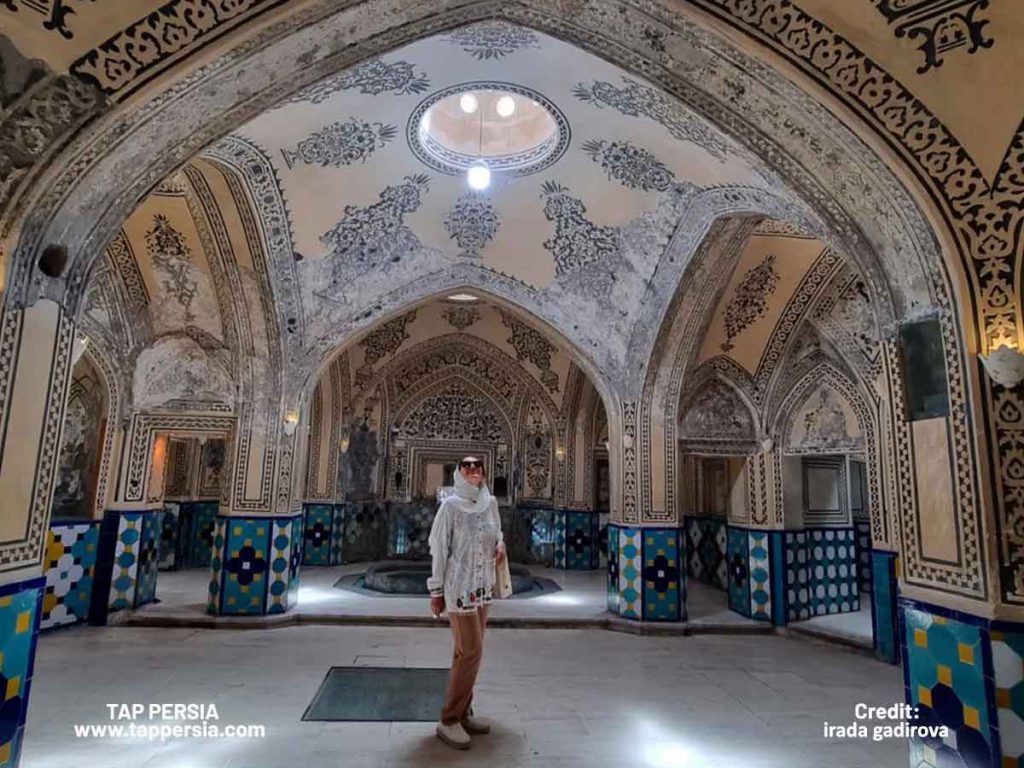
- The Sultan Amir Ahmad Bathhouse is located amidst popular tourist attractions in Kashan, including the Agha Bozorg Mosque and Kashan Traditional Houses.
- Constructed in the sixteenth century under the Safavid Dynasty, the hammam consists of two parts: the dressing hall and the bathing hall.
- The rooftop of the bathhouse offers a unique view, resembling space pods that have arrived in Kashan.
- The interior of the bathhouse is adorned with plasterwork, bricks, paintings, and tiles in turquoise and gold, creating a visually stunning atmosphere.
- Gilded glass domes not only add to the beauty but also provide natural light within the bathhouse.
- After renovations, the bathhouse was transformed into a museum, but before that, it served as a typical teahouse, adding to its historical significance and charm.
Hammam-e Ali Gholi Agha, Isfahan
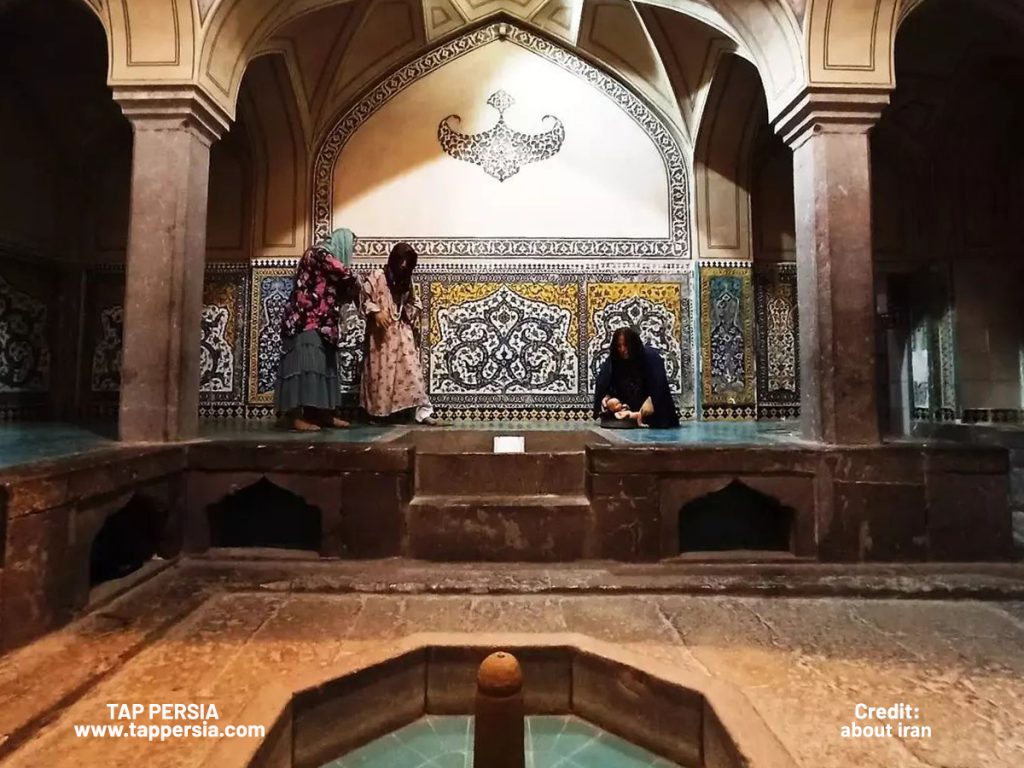
- The Hammam-e Ali Gholi Agha in Esfahan showcases symmetrical detail and vibrant tiles, reflecting the city’s architectural style.
- Persian miniature paintings adorn the upper part of the walls, while the lower half is covered with tiles reminiscent of Esfahan’s grand mosques.
- The complex not only includes the bathhouse but also features a mosque and market, offering visitors a glimpse into the multifaceted history of the site.
- Located in Isfahan Province, Isfahan, on Bid Abadi St., Iran, the hammam operates on weekdays until 6 p.m., providing ample opportunity for visitors to explore and experience its cultural richness.
Bab Homayoun Traditional Bathhouse, Tehran
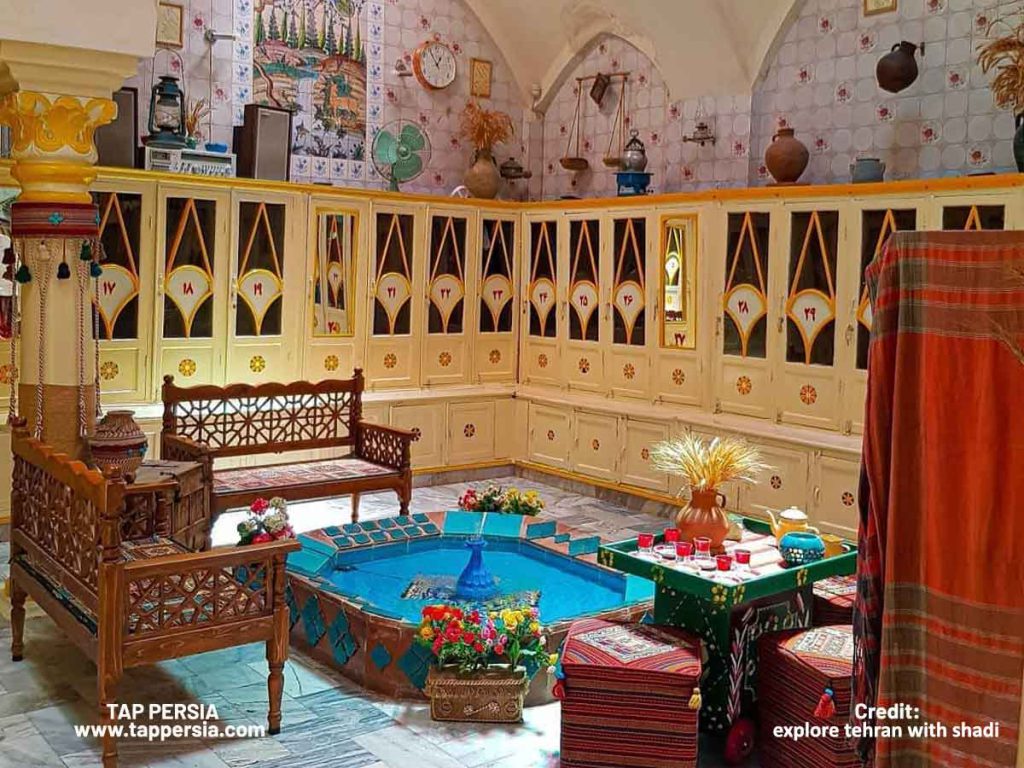
- Bab Homayoun traditional bath is situated in a historic neighborhood near Tehran Bazaar and stands as one of the few baths that has preserved its original design and continues to operate.
- With a history spanning over three centuries, Bab Homayoun is one of Tehran’s Qajar baths, attracting renowned figures from the Iranian film industry who have utilized its unique ambiance as a backdrop for notable and historical movies.
- The bath’s water supply, sourced from the Haj Alireza Qanat (well), spans more than a thousand square meters, and the bath itself is located approximately twenty steps below the level of Tehran Bazaar.
Khan Bathhouse, Yazd
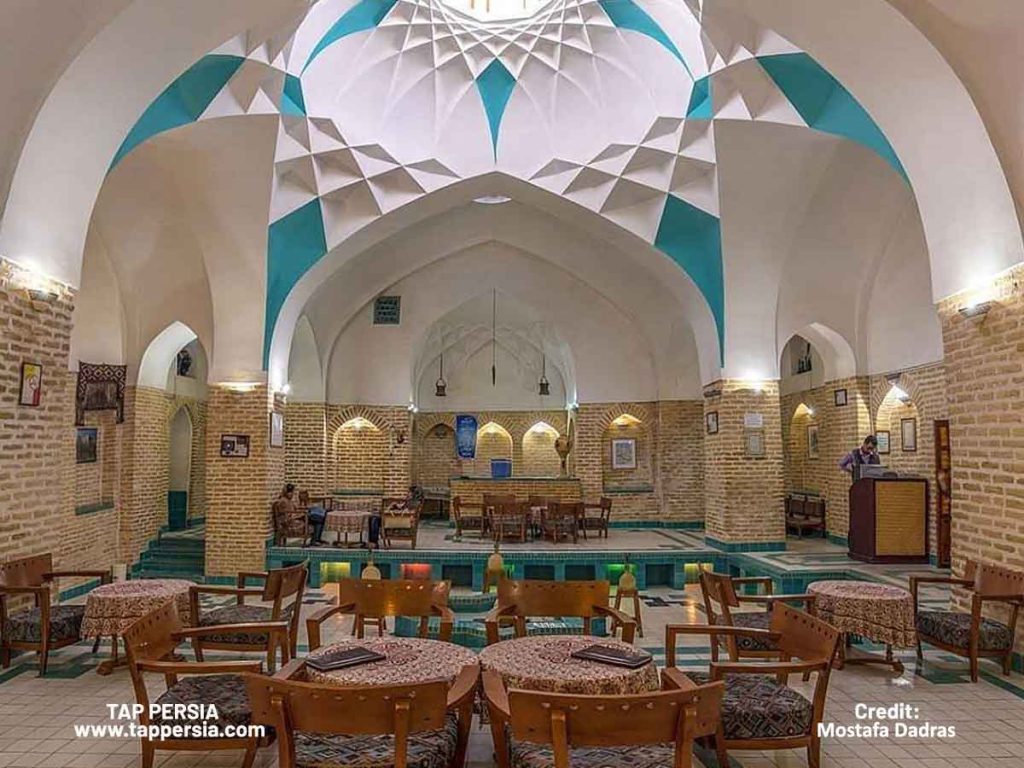
- Khan Bath is one of Iran’s renowned baths, known for its simple and welcoming design that appeals to all travelers.
- Built in 1797, the bath is divided into different areas, including Khazineh (the bathing area) and Shah Neshin (the resting area).
- The architecture of Naser al-Din Shah Qajar Era can still be observed in the bath, adding to its historical significance.
- Khan Bath can be accessed through three different routes: Khan Square, Kashigari Bazaar, and the residential section of the city.
- Today, Khan Bath has been transformed into a popular traditional restaurant and is a highly visited tourist destination in Yazd, offering a remarkable dining experience and the chance to indulge in delicious Iranian cuisine, such as dizi.
- The bath’s excellent architecture and structure further enhance the overall experience for visitors.
Qazi Persian Bathhouse, Isfahan
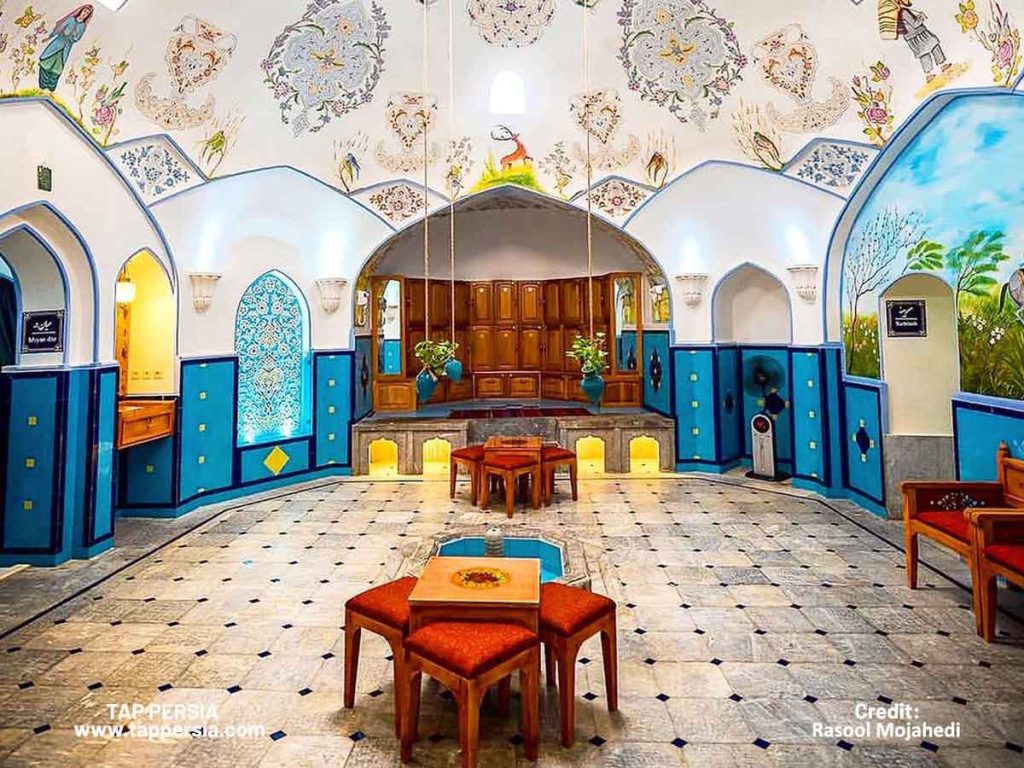
- Qazi Hammam, a refurbished traditional hammam in Isfahan, offers visitors a unique and authentic experience.
- As a standalone museum, the hammam allows guests to be bathed, cleansed, and massaged, just as ancient Persians did, providing a glimpse into the past.
- The professional scrubbing and washing in the Persian manner can effectively rejuvenate the body and wash away fatigue and dirt accumulated throughout the day.
- Alongside the pampering experience, visitors can also delve into the rich history of Iranian bath culture, gaining insights into the customs and traditions associated with hammams.
- The architectural beauty of the historical hammam, with its distinctive features, adds to the overall charm, allowing guests to appreciate the craftsmanship and design of these traditional bathhouses.
Hammam e Vakil, Shiraz
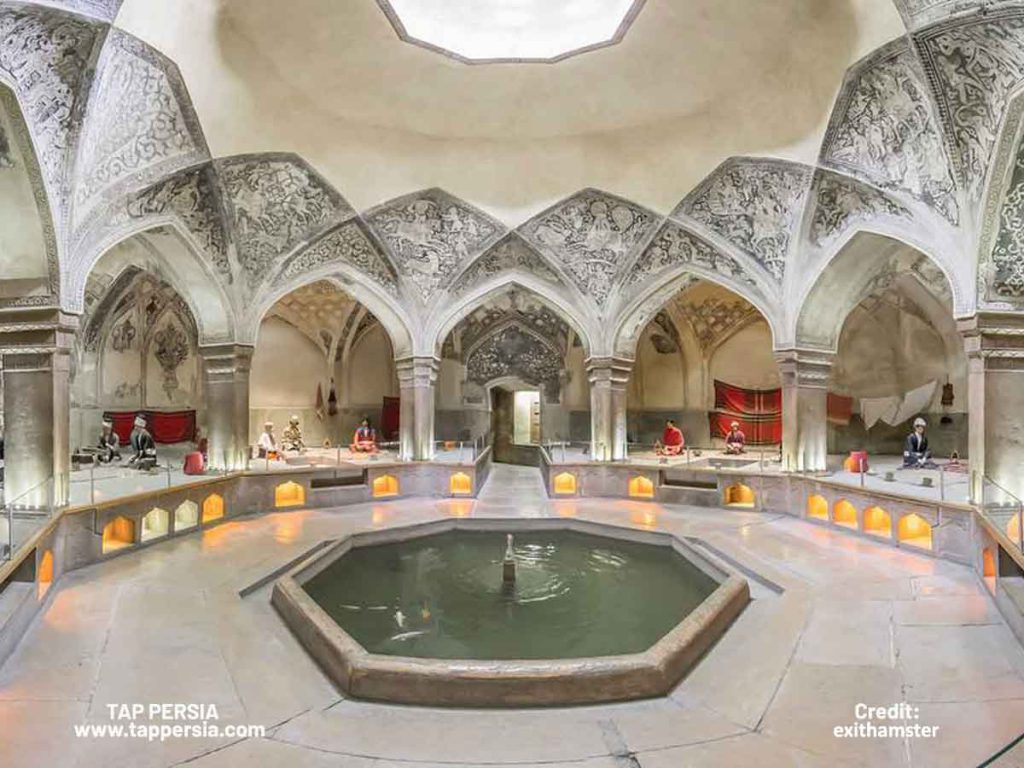
- The Vakil Bath in Shiraz, built during Karim Khan Zand’s reign in the 18th century, houses a remarkable collection of exquisite pieces.
- Located in the Darb-e-Shahzadeh neighborhood, the Vakil Bath spans an impressive 11,000 square meters and features a cube-shaped bathroom facing north.
- The bathhouse holds significant architectural and artistic importance and is renowned for its association with the Iranian Carpet Museum, established by the Cultural Heritage Organisation of Fars Province.
- Similar to the “Kerman Vakil Bathhouse,” the “Shiraz Vakil Bathhouse” derives its name from the Zandiyeh era, where it was commonly referred to as “Vakil ol Roaya.”
Qajar Bathhouse, Qazvin
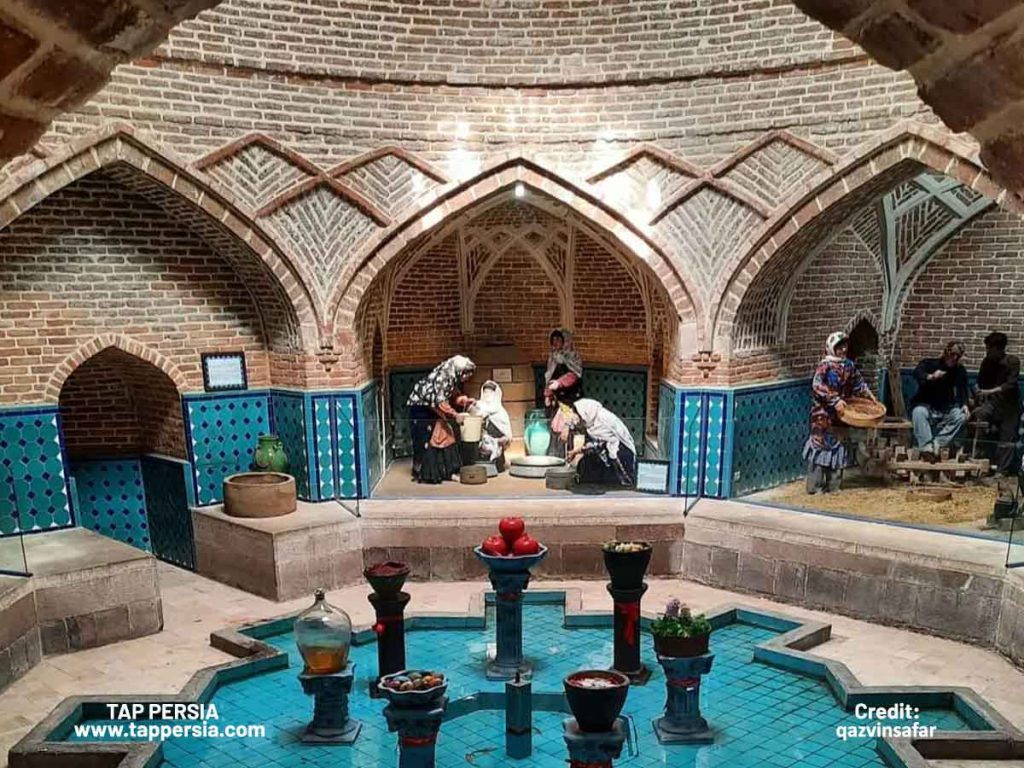
- Qajar Bath, constructed by a commander of Safavid king Shah Abbas, is one of the largest and oldest public baths in Qazvin.
- The bath is located in Qazvin’s historic district and is primarily built using brick and tile materials.
- It features separate caldaria (hot rooms) for men and women, as well as domed changing rooms.
- Initially in ruins, the bath underwent restoration and was transformed into a tea shop and museum, offering visitors a glimpse into traditional bath culture.
- Today, the renovated Qajar Bath serves as both a place to enjoy tea and a museum dedicated to preserving the heritage and history of public baths.
Historical Bathhouses, Kerman
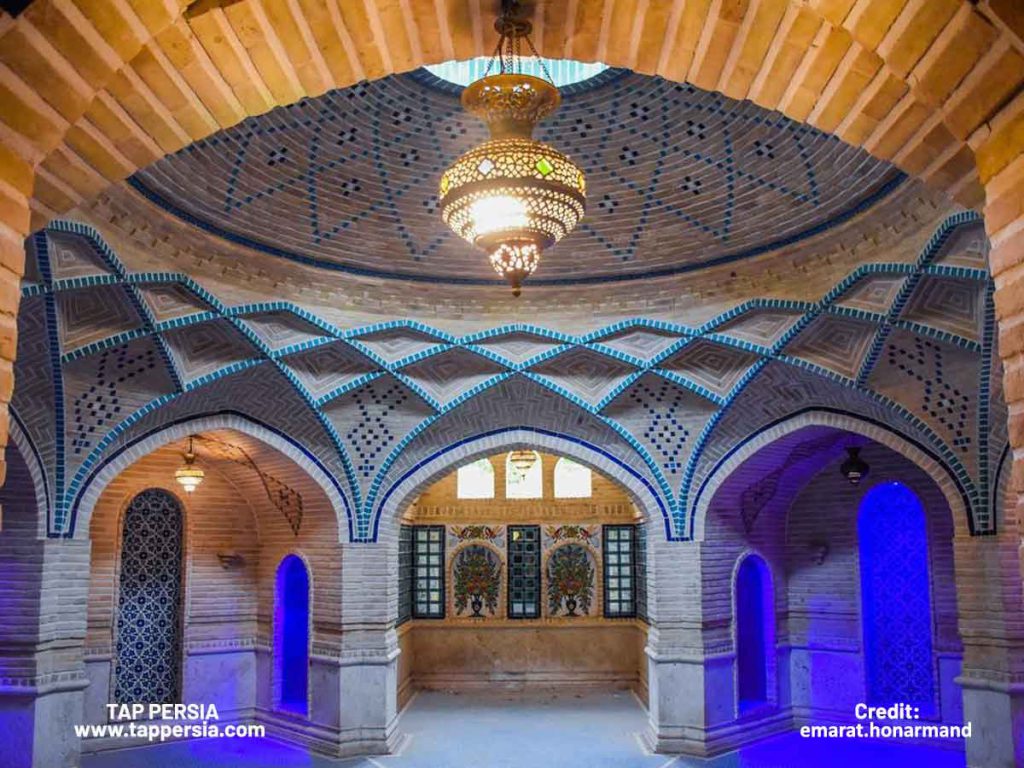
- The Ganjali Khan complex in Kerman is home to two notable hammams: the Vakil Bathhouse and the Ganjali Khan Bathhouse.
- The Vakil Bathhouse, now serving as a teahouse, boasts well-preserved architecture, showcasing the historical charm of the bathhouse.
- Inside the Vakil Bathhouse, guests can find handcrafted clothing and comfortable seating arrangements, creating a cozy atmosphere for relaxation.
- Guests can enjoy hot tea while being serenaded by live traditional music, adding to the cultural ambiance of the teahouse.
- The teahouse is also renowned for offering Kerman’s famous Kolompeh cookies, a delectable treat filled with chopped dates and crushed walnuts, representing a local culinary delight.
Fin Bathhouse, Kashan
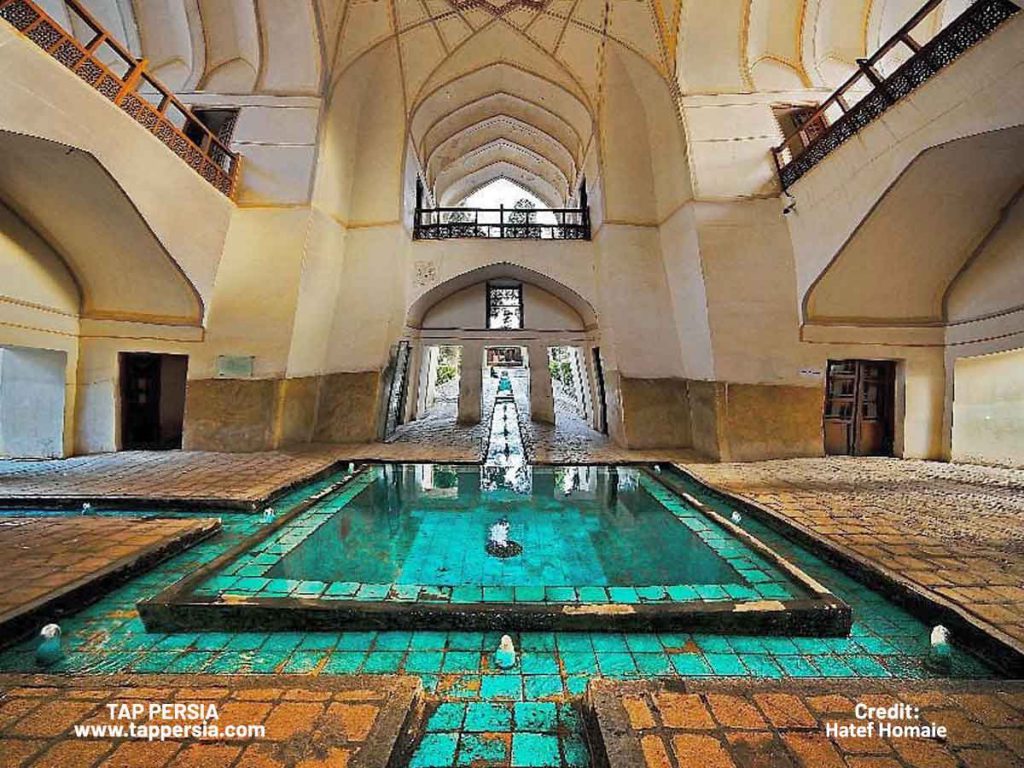
- The antique hammam is located within the Fin Garden, one of Iran’s most exquisite complexes, where visitors can experience the beauty of both a magnificent Persian garden and an ancient bathhouse.
- The Fin Garden is situated in a lush and temperate area, historically known as the village of Little Fin, located approximately six kilometers south of Kashan.(Iran historical Places)
- In the present-day divisions of Kashan, the Fin Garden is positioned at the end of Amirkabir Street, making it easily accessible to visitors.
- Within the Fin complex, two notable structures are the great and small baths, located in the southern part of Fin Garden, and are considered Kashan’s significant landmarks.
Conclusion
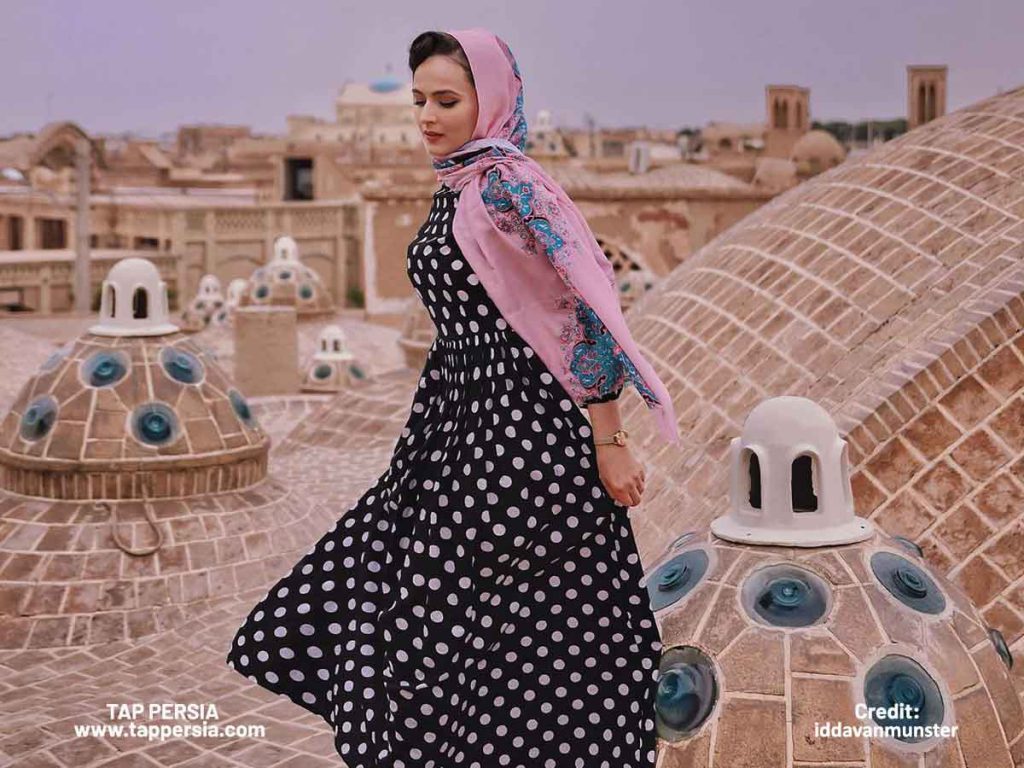
Iran’s hammams provide a unique and all-encompassing spa experience that blends rest, cultural heritage, and renewal. Entering these traditional bathhouses seems like traveling back in time, allowing the stresses of the outer world to fade away. The Iranian hammams provide a singular chance to experience a customary spa experience that feeds the body and calms the soul, all thanks to its exquisite architecture, calming rituals and extensive history.




Comment (0)